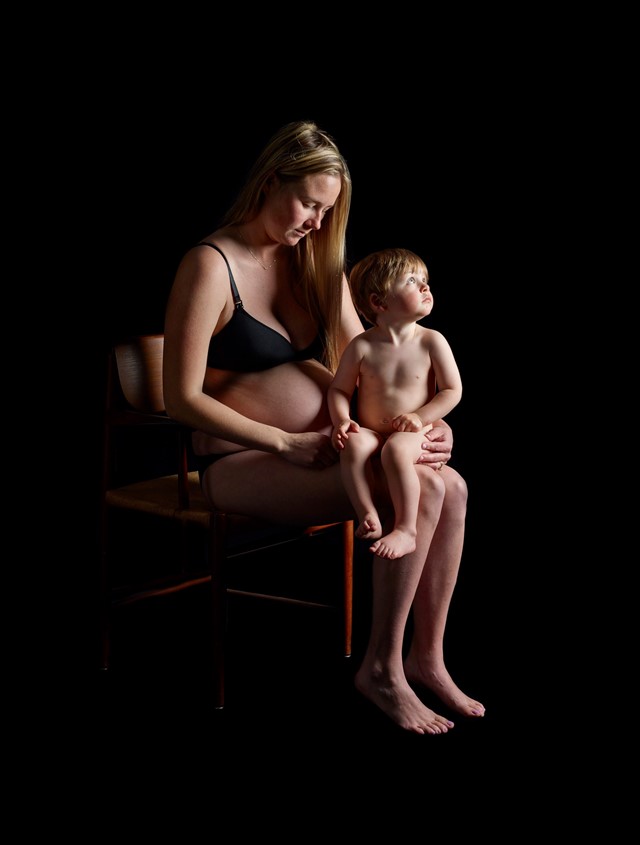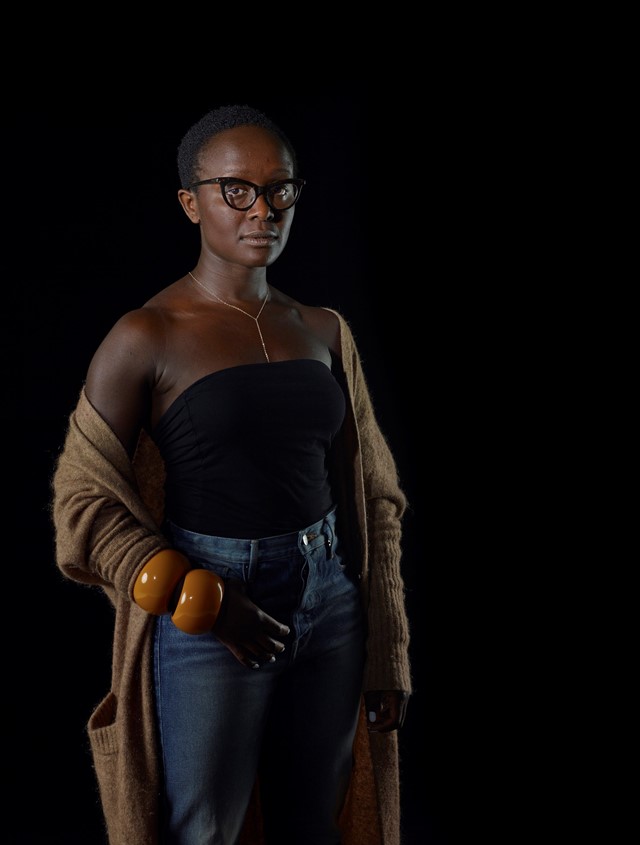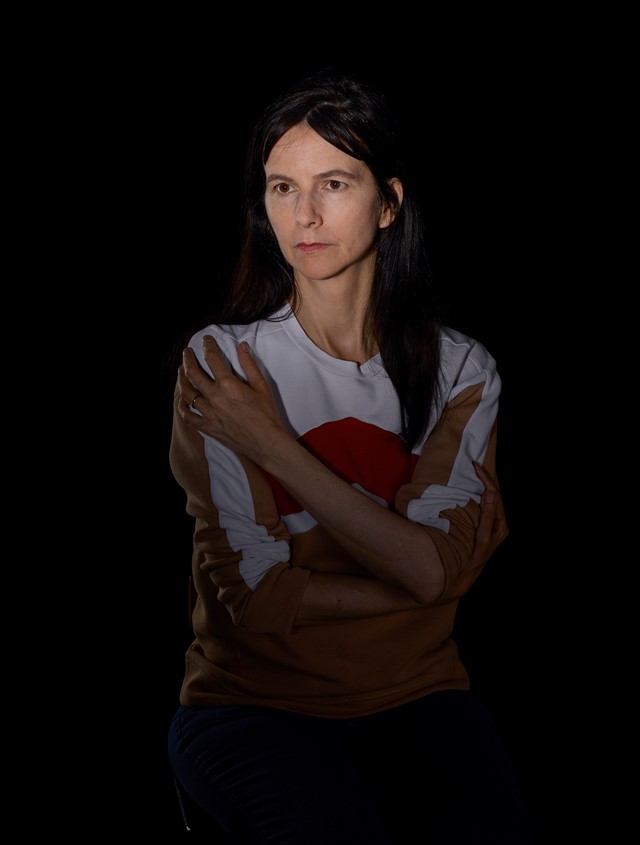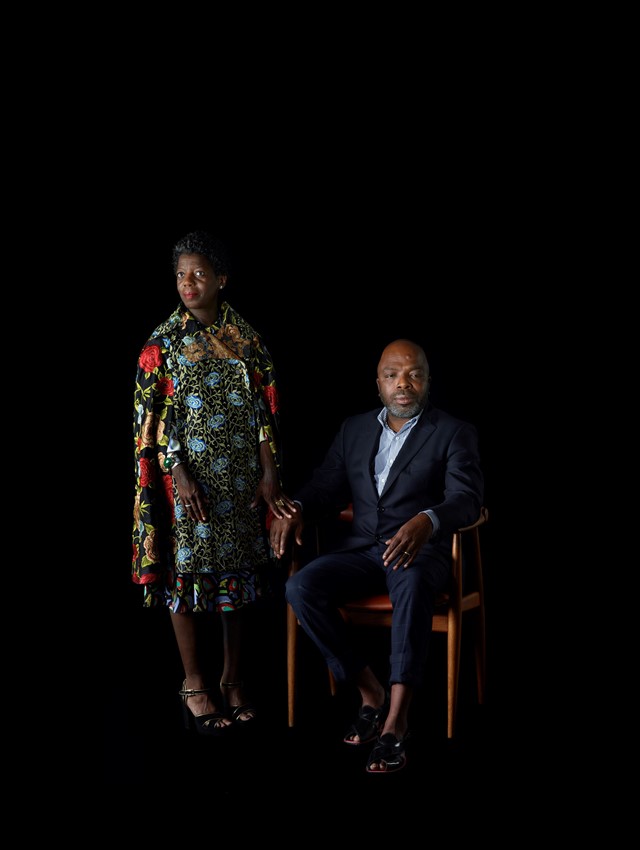Catherine Opie has spent five years photographing her friends and loved ones against a Baroque backdrop. Here she tells AnOther how it all began
The range of subjects LA-based art photographer Catherine Opie has captured over the course of her 30-year career is vast – from a candid series of Californian surfers who have just emerged from the waves, to recent project 700 Nimes Road, for which she spent six months documenting the unoccupied residence of the late Elizabeth Taylor. The common theme underpinning them all? An exploration of identity, and what it means to be human.
This is perhaps best demonstrated in her documentation of the leatherdyke communities she was party to during the 1990s; one of her most controversial images is Self-Portrait/Pervert (1994) in which Opie, clad in a bondage mask and with 46 needles inserted into her arms, sits before the camera, the title of the piece carved in oozing script into her bare chest. At the time of its creation, the AIDS crisis was still rampant, the stigma attached to blood rife. She set out in her work to show that the people in her intimate photographs – friends, S&M partners, lovers – were more than the sum of the practices that society had labelled taboo.
Today, she is also a tenured professor of photography at UCLA, and when we speak ahead of her show opening at Thomas Dane Gallery, Opie explains that she’s about to take some time off from working altogether. “I will be in London for the opening, and then I’m also going to be opening a big show in Norway. And then when I come home, I get to have hip replacement surgery – woo hoo!” Her convivial manner radiates over the phone; it’s easy to understand how she must invoke a sense of ease in her subjects. Her ongoing series Portraits and Landscapes chronicles just that: studies of the people in her circles, juxtaposed with a series of images examining historical landscape photography. As it opens in the UK for the first time ever this week, Opie explains how the series began and why the camera has acted as a communication tool for her since she was nine years old.

On how the series began...
“The idea for the portraits started about five years ago, in London. I went to see the Leonardo da Vinci show at the National Portrait Gallery, and the Gerhard Richter show was up at the same time at Tate Modern. I was really interested in how Richter constructs his paintings in relationship to ideas about photography as well. Painting and photography hold an ongoing conversation, a conversation that I am both fascinated and influenced by. I came home from the UK and was looking at some of the instances that I had used black backgrounds in my work. I kept looking at those images that I had made, and realised what the colour black meant to me – that it was this eternal space and a way for the figure to emerge from the background. I began to light the set-up in these Baroque ways, to reflect how much I loved the period of Baroque paintings. I was thinking about what it means to create a photograph to captivate someone for longer than a second, in an era which we are bombarded by so many images.”

On choosing the subjects she shoots...
“Well, they are different people for different reasons. Gillian [Wearing], I have known for years, for example. Duro [Olowu] and Thelma [Golden], never really had a formal portrait taken together, and they are such a powerful couple. Portraiture tells the history of a time and the story of a person living in that time. That was the catalyst for some of my earlier portraits, capturing my friends who were dying of AIDS very young. I felt like I needed to keep looking at these faces, that I loved so much, and capturing them in a particular moment. Now it’s about looking at people who inspire me or that have been a part of my life in different ways, or in my circle of friends. I think that portraits of artists are usually only taken in their studios too. I am interested in what it means to take an artist and float them in your subconscious by placing them in a completely different space.”

On Rick and Michèle...
“I have known Michèle since the early 90s, although I don’t know Rick quite as well. I really wanted their portrait to be together, because I think that they are such an amazing team. But I photographed them together and to put it simply, I just didn’t like it as much as I did as the separate portraits. I also photographed Duro and Thelma, separately which I loved, but the portrait of them together with their hands just slightly touching, wearing that cape that Duro made, just worked. But Rick and Michèle seemed to fit better in their circular frames, as individuals.”

On beginning her career...
“I was nine years old and I asked for a camera for my birthday. I was writing a book report about Lewis Hine’s photographs of child labourers and the images affected me much more than the words. I kept on looking at that famous picture of the young girl in the cotton mill, thinking about my age and her age and the fact that photography helped to change the child labour laws in this country. I was born in 1961, so I grew up in a generation where pictorial magazines were everywhere in the house, too. So I told my parents that was what I wanted to do, and by the age of 14 I had built my own darkroom through money I saved up through babysitting. In high school, I was the kind of kid who made friends because they would take pictures of the plays and events that were put on, and then go home, make prints and bring them in the next day. And that opened doors to me having friends, because I didn’t really know how to otherwise, but the camera really helped me. To this day, it helps me!”

Catherine Opie: Portraits and Landscapes runs from October 3 to November 18, 2017, at Thomas Dane Gallery, London.
